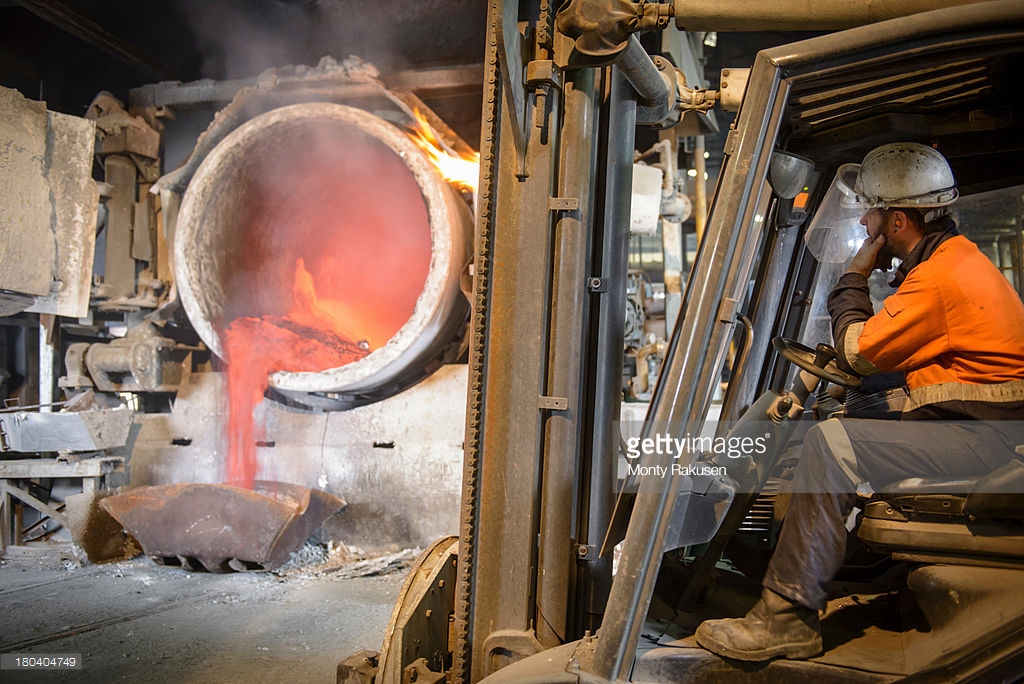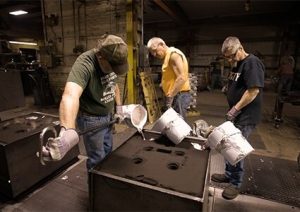Why Lightweight Aluminum Castings Reduce Costs in Transportation
Wiki Article

Comprehending the Refine: How Aluminum Foundries Create High-Quality Products
Aluminum foundries play an important function in creating top notch products through a thorough process. It begins with melting raw aluminum, which removes contaminations. Afterward, numerous molding strategies form the metal into wanted types. Accuracy during pouring and solidification is critical to fulfill precise specs. The final phases involve completing touches that boost durability and appearance. As modern technology advancements, these procedures are refined further. What developments are shaping the future of aluminum foundries?The Melting Process: Transforming Raw Aluminum
The melting procedure offers as a critical action in changing raw aluminum right into useful items. Aluminum scrap or raw ingots are put in a heater where they are subjected to high temperature levels, normally reaching around 660 levels Celsius. This extreme heat triggers the aluminum to melt, allowing pollutants to increase to the surface area, where they can be skimmed.Various melting strategies, such as induction melting or gas-fired melting, might be used depending on the specific needs of the shop. The option of technique can influence energy performance and steel high quality. Keeping specific temperature control is necessary to guarantee uniform melting and to prevent oxidation that can endanger the material.
Once melted, the aluminum awaits further handling, setting the stage for succeeding procedures that will mold and mildew it right into particular forms and items. Wisconsin Aluminum Foundry. The quality of the melting process directly affects the honesty of the last aluminum things produced
Molding Methods: Shaping the Future
After the aluminum has been thawed and contaminations removed, it is ready for forming through different molding strategies. One of the most common approaches is sand casting, where a mold is created from sand and a binder. This strategy permits for intricate layouts and is economical for low to medium manufacturing runs. Another popular method is die spreading, which involves forcing liquified aluminum right into a steel mold and mildew under high pressure. This method leads to high precision and smooth surface areas, making it ideal for automation.
Long-term mold spreading is likewise used, utilizing multiple-use mold and mildews that boost dimensional precision and surface area finish. Each molding method supplies one-of-a-kind advantages, enabling foundries to tailor their procedures based on product requirements and manufacturing quantity. By selecting the appropriate approach, aluminum foundries can ensure exceptional top quality and efficiency in their end products, solidifying their role in different sectors.
Pouring and Solidification: The Art of Casting
Pouring molten aluminum right into molds notes an important stage in the spreading process, where precision and timing are necessary - Wisconsin Aluminum Foundry. The foundry team should thoroughly regulate the temperature level of the aluminum to assure suitable fluidity, preventing issues such as porosity or cold shuts. As the steel is poured, it streams into the ins and outs of the mold and mildew, filling up every tooth cavity to develop the preferred shapeSolidification begins immediately as the liquified aluminum changes and cools down to a solid state. This phase is influenced by several elements, consisting of the mold product, density, and ambient temperature. The cooling rate should be managed to stay clear of tension cracks or bending in the completed product.
When strengthened, the aluminum handles the exact dimensions and features of the mold, establishing the stage for succeeding handling. This putting and solidification process exhibits the delicate equilibrium of art and scientific research in aluminum spreading, crucial for producing top notch items.
Finishing Touches: Guaranteeing High Quality and Accuracy
Ensuring high quality and accuracy in aluminum products calls for careful focus to information throughout the ending up procedure. This stage includes various methods intended at enhancing the surface area features and dimensional accuracy of the cast components. Common techniques consist of machining, surface treatment, and sprucing up. Machining fixes any kind of dimensional disparities and attains the preferred tolerances, while surface area treatments, such as anodizing or powder coating, provide corrosion resistance and boost visual allure.Polishing eliminates surface imperfections, causing a smooth finish that fulfills stringent specs. Quality control is paramount; each completed piece goes through rigorous evaluation to recognize any issues. Advanced gauging tools, like coordinate gauging devices (CMM), are often utilized to assure conformity with style specs. Additionally, knowledgeable professionals play a crucial role, bringing experience and experience to identify concerns that machines may overlook. This comprehensive finishing process eventually ensures that the aluminum products meet customer expectations for top quality and performance.
Developments in Aluminum Foundry Technology
The search of quality and precision in aluminum items has actually led to substantial advancements in shop technology. Innovations such as robot automation have structured procedures, enhancing efficiency and lowering human mistake. These robotics are now efficient in doing complicated tasks, consisting of exact mold handling and product putting, which ensures constant product high quality.Furthermore, the assimilation of computer mathematical control (CNC) machines has changed machining operations, enabling intricate designs and tighter tolerances. Advanced simulation software program facilitates much better process preparation by enhancing and forecasting prospective flaws steel circulation. Moreover, the fostering of environmentally pleasant techniques, such as reusing aluminum scrap and utilizing low-emission heaters, has actually improved sustainability in the market.

Frequently Asked Questions
What Kinds Of Aluminum Alloys Are Commonly Made Use Of in Shops?
Commonly made use of aluminum alloys in foundries include 356, 319, and 413. These alloys are recognized for their exceptional spreading residential or commercial properties, mechanical strength, and resistance to deterioration, making them appropriate for a variety of applications.How Do Foundries Ensure Ecological Sustainability in Their Processes?
Factories execute ecological sustainability by reusing aluminum scrap, optimizing energy performance, decreasing emissions, making use of environmentally friendly products, and sticking to regulative standards, consequently lessening their environmental footprint while preserving manufacturing high quality and efficiency.What Precaution Are Implemented in Aluminum Foundries?
Aluminum foundries carry out various security actions, including individual safety devices, ventilation systems, regular safety training, emergency situation action protocols, and equipment maintenance checks. These practices aim to lessen dangers and assure the well-being of all workers involved.How Do Foundries Deal With Problems in Cast Products?
Foundries attend to defects in cast products by employing strenuous assessment techniques, including aesthetic checks and non-destructive testing. When issues are identified, they might revamp or ditch items, making sure adherence to high quality requirements and customer requirements.What Is the Regular Lead Time for Aluminum Casting Projects?
The normal lead time for aluminum website casting projects varies from a few weeks to numerous months. Aspects affecting this timeline include style intricacy, manufacturing quantity, and the schedule of products, which differ significantly across different foundries.Aluminum foundries play a necessary role in creating top notch items through a meticulous procedure. Aluminum Foundry. The shop group should very carefully regulate the temperature level of the aluminum to ensure optimal fluidity, preventing flaws such as porosity or chilly shuts. The pursuit of high quality and accuracy in aluminum products has led to considerable advancements in factory innovation. Commonly utilized aluminum alloys in foundries include 356, 319, and 413. Aluminum foundries implement different safety and security steps, consisting of personal protective tools, ventilation systems, routine safety and security training, emergency response methods, and equipment maintenance checks
Report this wiki page